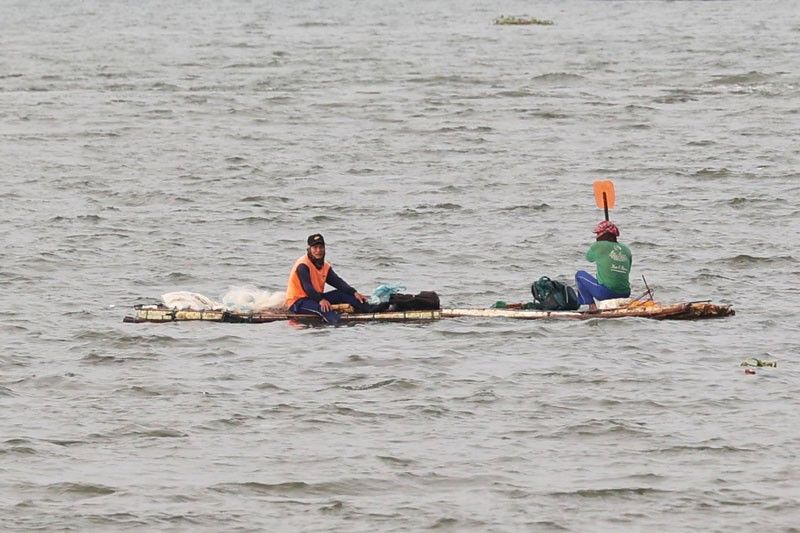‘Local fish supply stable after Paeng’

MANILA, Philippines — Despite the destruction wrought by Severe Tropical Storm Paeng, aquaculture groups under food security and livelihood advocacy group Tugon Kabuhayan said there is no need for importation as local fish supply remains stable.
Latest data from the Department of Agriculture (DA) showed the total value of losses in the fisheries sector amounted to P16 million after the storm affected fishponds and cages of bangus and tilapia and seaweed farms, and damaged non-motorized boats and municipal fishing boats.
In a statement, Taal Lake Aquaculture Alliance Inc. director Mario Balazon said Paeng’s impact should not be used as an excuse to flood the local market with imported fish.
He said the aquaculture industry remains resilient regardless of the strong winds, rain and flooding that occurred.
“Despite Typhoon Paeng affecting many fish producers, it did not hinder our production. We can still supply the whole country without importing fish. Don’t use this calamity as a reason to justify importation. Support our local producers first before turning to other countries for fish,” Balazon said.
He said the losses in aquaculture in Talisay, Batangas due to the typhoon are estimated at P22 million.
“Approximately 200 tons of fish escaped the cages,” he said. “In Calauan, Laguna, the supply of fingerlings was washed out. But we are confident that in three months we will be able to re-stock again and rest assured that this will not affect the supply of tilapia.”
In supporting the claim that fish supply is stable, Philippine Tilapia Association president Jon Juico said Paeng did not cause much damage in Pampanga.
“We are always prepared here in Minalin since we don’t use nets. We use dykes and we are affected more by dams releasing water, not by typhoons,” Juico said, noting that importation, and not typhoons, cause more damage to the aquaculture sector.
“Last year, the prices for bangus and tilapia plummeted because of importation. Our local producers were forced to sell their fish for only P60-70, while the cost of production per fish was P90. It devastated the industry when the market was inundated by imports,” he said.
Tugon Kabuhayan co-convenor Norbert Chingcuanco said there cannot be a shortage of fish in the Philippines.
“When fish from aquaculture cages escape, the municipal fishermen catch those fish. It doesn’t disappear. Our fishing industry is robust and we can always fulfill the demand,” he said.
Instead of importing fish from other countries, Balazon proposed the promotion of local aquaculture.
“When there is a closed season for certain fish, why not buy and support the products our fish growers produce? This way, our fish growers can recoup their losses from the current high cost of production,” he said.
Tugon Kabuhayan convenor and former Bureau of Fisheries and Aquatic Resources director Asis Perez said Filipino fishermen know how to adapt to typhoons.
“While we are one in the call for immediate government action in providing the necessary support for the local fisheries industry, we are also expressing that Filipinos – no matter the predicament – are inherently fighters. The effect of typhoon Paeng is just one of the many bouts that can be surmounted with our own hands,” said Perez.
DA: Agri losses hit P2.74 billion
Latest data from the DA showed Paeng has caused P2.74 billion worth of damage and losses to the country’s agricultural sector.
The storm adversely affected 79,944 farmers and fishers, with volume of production loss at 111,831 metric tons (MT) and 82,380 hectares of agricultural areas in Regions 4B (Mindoro provinces, Marinduque, Romblon, and Palawan or Mimaropa), 6 (Bicol), 7 (Western Visayas), 9 (Zamboanga peninsula) and 12 (Soccsksargen or Central Mindanao), it said.
Damage in the rice sector reached P1.71 billion, covering 75,393 hectares and 95,694 MT lost.
For high-value crops, the loss is valued at P555.4 million, accounting for 2,747 hectares and 12,388 MT of produce.
The corn sector incurred losses amounting to P135.4 million, equivalent to 4,239 hectares affected and 2,415 MT of volume loss.
Damage to agricultural facilities, including irrigation, laboratories and nurseries, amounted to P133 million, while the total value of losses in the fisheries sector reached P201.64 million.
For livestock and poultry, losses in the sector reached P9.49 million. – Catherine Talavera, Mayen Jaymalin, Richmond Mercurio, Ralph Edwin Villanueva, Rudy Santos
- Latest
- Trending





























